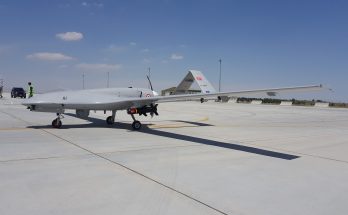by Dan Darling, Forecast International.
When Narendra Modi’s center-right National Democratic Alliance (NDA) proved victorious in India’s elections a year ago, the win seemed to herald a new era for India’s armed forces. The Modi government came into power last May vowing to strengthen India’s armed forces and reform the country’s jumbled and dilatory procurement approach. Since stepping into office, it has aimed to do this by fast-tracking military modernization programs and opening up the country’s lackluster defense industrial sector to greater foreign investment.
While small steps in this two-pronged approach have since indeed been taken, the situation for India’s military nonetheless remains much the same today as it was when the left-leaning, Congress-led United Progressive Alliance (UPA) government ruled India.
Foreign direct investment (FDI) in India’s defense sector remains zero despite the raise by the government in the level of allowable foreign ownership in joint ventures with local firms to 49 percent from 26 percent in NDA’s first month in office. Orders for necessary items such as ammunition and ordnance have indeed been green-lighted, as have some shipbuilding projects, but crucial capitalization projects such as the Avro light air transport aircraft and Medium Multi-Role Combat Aircraft (MMRCA) requirement remain grounded.
Moreover, the government’s budgetary approach has so far differed little from that of its predecessor, with defense allocation and infrastructure investment increases weighed against social welfare concerns. While both governments increased defense spending, funding rises have largely been conducted commensurate with economic growth, and thus annual earmarks continue to equal about 1.74 percent of gross domestic product.
As India boasts the world’s tenth-largest economy, the nominal value of this benchmark is not easily dismissed. However, the annual defense allocation not only goes toward feeding, clothing, quartering, training and equipping 1.3 million active defense personnel, but is also focused on the need to combat internal threats (such as domestic insurgencies and Islamic-inspired militant extremists), confront ongoing tensions with neighboring Pakistan over Kashmir, and retain a semblance of strategic parity with China’s expanding military.
When the NDA presented its interim budget last July for the 2014-15 fiscal year, it likely seemed a breath of fresh air to the armed forces. The interim budget included a top-up of INR50 billion ($800+ million) to the overall INR2.24 trillion ($36+ billion) already allocated for defense in FY14-15 under the state budget crafted by Manmohan Singh’s UPA government. Though limited, the additional funding was more a symbol of what both the government and the military sought in the months and years ahead.
Flash forward to February 28 and the unveiling of the new budget, and suddenly what once was an intriguing future appears to reflect more of the recent past.
The Modi government’s FY15-16 budget, marking its first full-year fiscal budget, earmarks INR2.47 trillion ($40 billion) for defense, a 10 percent boost. On its face, such an outlay seems a major step forward in improving soldier welfare and modernizing military capabilities. After all, the year-on-year increase is more than double that of FY13-14, when the budget grew by 5 percent.
But in truth there is less than meets the eye.
First, the actual defense budget for FY14-15 pegged by the NDA last July – INR2.29 trillion – was ultimately revised downward to INR2.22 trillion. This represents a longstanding pattern whereby the Indian Defence Ministry returns unspent funds back to the national treasury – a practice that appears all the more unbelievable when considering that since the 1999 Kargil War, the military modernization requirements of the Indian armed forces have proliferated while their current weapons inventory has become increasingly obsolete. Thus it cannot be expected that all the funding earmarked for defense under the new budget will actually be spent.
Second, the capitalization earmark – funding used to purchase new weapons platforms and individual equipment – remains stable but unincreased, at INR946 billion ($15 billion). While this stable level of capital funding is indeed good, it is still less than what the armed forces had sought (INR978 billion). The capital allocation must cover funding for a backlog of outstanding requirements, including the aforementioned MMRCA plus 22 Boeing AH-64D Apache attack and 15 Chinook heavy-lift helicopters, 145 ultra-light howitzers, new anti-aircraft guns, 12 new mine-countermeasures vessels, and a host of other items. Should a contract for the MMRCA acquisition finally be consummated, a 15 percent down payment on the $20 billion program must be made to France’s Dassault. While the government insists that in this instance extra-budgetary funding will be made available, such a promise may fall victim to other fiscal priorities and thus be pulled from the very budget pool from which other projects must also be funded.
Third, while a direct comparison with China’s defense budget presents an apples-to-oranges scenario, the truth remains that China’s defense allocation for 2014 was $132 billion, with that government-declared figure itself thought to exclude numerous military-related research and development projects. Topline figures aside, India continues to lag well behind the level of per-GDP defense expenditures of its neighboring strategic rivals, China and Pakistan.
Fourth, India’s financial ability to procure high-end defense technologies remains subject to swings in the value of its local currency (the rupee) against the U.S. dollar. With India importing over 70 percent of its military equipment, the impact of negative currency fluctuations on the armed forces’ readiness and capability remains acutely worrisome – hence the “Make in India” policy trumpeted by the Modi government, aimed at reducing dependence on foreign-sourced defense equipment.
But while this campaign is laudable in theory, India’s defense sector currently is not at a mature enough level to meet the myriad weaponry demands of the armed forces. Between 2010 and 2012, for instance, India’s defense industry exported a total of $183 million worth of armaments. Meanwhile, according to the Stockholm International Peace Research Institute (SIPRI), from 2009 through 2013, India’s arms imports represented 14 percent of the total international share.
Fifth, in terms of soldier welfare, the budget speech by Finance Minister Arun Jaitley made no mention of funding for the “One Rank, One Pension” (OROP) scheme aimed at eliminating pension anomalies for retired personnel. The OROP policy is considered a critical step toward boosting morale in the Indian military community.
Nonetheless, this is the Modi government’s first full budget, not its last. There will be plenty of additional opportunities going forward to present distinctions between itself and the desultory stabs at military modernization performed by the former Congress-led administration. One sure way would be to untangle the Gordian knot that is India’s military procurement process – a process that since at least 2005 has resulted in a slew of backlogs and unconsummated acquisition contracts.
But other, more crucial actions to rectify India’s defense modernization woes would come by lifting the FDI cap on foreign ownership of joint defense ventures above 49 percent, by bringing accountability to the state-run Defence Research and Development Organization (DRDO), and by continuing to encourage greater private sector involvement in defense projects. These steps would serve as more than merely symbolic gestures – they would go a long way toward jump-starting the slumbering giant that is India’s defense-technology industry.
For 50 years, Forecast International intelligence reports have been the aerospace and defense industry standard for accurate research, analysis, and projections. Our experienced analysts compile, evaluate, and present accurate data for decision makers. FI's market research reports offer concise analysis of individual programs and identify market opportunities. Each report includes a program overview, detailed statistics, recent developments and a competitive analysis, culminating in production forecasts spanning 10 or 15 years. Let our market intelligence reports be a key part of reducing uncertainties and mastering your specific market and its growth potential. Find out more at www.forecastinternational.com



